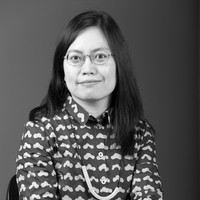
Nithikul Nimkulrat
I am currently working as Associate Professor in Material Art and Design at OCAD University. My current research combining science with crafts examines the relationship between craft knots and mathematical knot theory. It has been carried out since 2013 in collaboration with a mathematician. Published by Bloomsbury Academic in September 2016, Crafting Textiles in the Digital Age is my edited book that aims to provide a debate on the role of craft in textile creation and digital technology.
Prior to the present post, I worked as Professor and Head of Department of Textile Design at the Estonian Academy of Arts from 2013 to 2018. Alongside my management responsibilities, I have consolidated my research profile of publication, conference organisation and PhD supervision/examination experience. Before this, I worked as Lecturer in Textiles at the School of the Arts, Loughborough University, UK, from 2011 to 2013. In this position, I established a useful link between research, creative practice, enterprise and conceptual modelling of art and design, encouraging research and teaching collaborations that benefit students in all levels. Before I joined Loughborough, I had worked as Postdoctoral Researcher in 2010 and Doctoral Researcher from 2005 to 2009 at Aalto University School of Arts, Design and Architecture, from which I received a Doctor of Arts Degree in 2009. My doctoral research Paperness: Expressive Material in Textile Art from an Artist’s Viewpoint explores the expressive properties of material in the creative processes of textile art. The concept of ‘Materialness’ generated from within the research has proven useful in teaching textiles at Aalto Arts, Loughborough and Estonian Academy of Arts.
My active involvement in international research networks can be recognised through my leading roles as an elected council member of the Design Research Society (DRS) and the convenor of the DRS Special Interest Group on Experiential Knowledge (EKSIG). I am also a member of the editorial team of Journal of Research Practice and that of Studies in Material Thinking.
Prior to the present post, I worked as Professor and Head of Department of Textile Design at the Estonian Academy of Arts from 2013 to 2018. Alongside my management responsibilities, I have consolidated my research profile of publication, conference organisation and PhD supervision/examination experience. Before this, I worked as Lecturer in Textiles at the School of the Arts, Loughborough University, UK, from 2011 to 2013. In this position, I established a useful link between research, creative practice, enterprise and conceptual modelling of art and design, encouraging research and teaching collaborations that benefit students in all levels. Before I joined Loughborough, I had worked as Postdoctoral Researcher in 2010 and Doctoral Researcher from 2005 to 2009 at Aalto University School of Arts, Design and Architecture, from which I received a Doctor of Arts Degree in 2009. My doctoral research Paperness: Expressive Material in Textile Art from an Artist’s Viewpoint explores the expressive properties of material in the creative processes of textile art. The concept of ‘Materialness’ generated from within the research has proven useful in teaching textiles at Aalto Arts, Loughborough and Estonian Academy of Arts.
My active involvement in international research networks can be recognised through my leading roles as an elected council member of the Design Research Society (DRS) and the convenor of the DRS Special Interest Group on Experiential Knowledge (EKSIG). I am also a member of the editorial team of Journal of Research Practice and that of Studies in Material Thinking.
less
Related Authors
Nithikul Nimkulrat
OCAD University
Eva Knoll
Université du Québec à Montréal
Stephen J Luecking
DePaul University
Christopher D Buckley
University of Oxford
Patricia Cadavid
Kunstuniversität Linz, Universität für künstlerische und industrielle Gestaltung, Austria


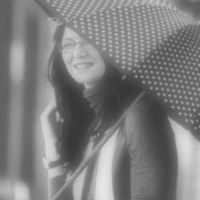
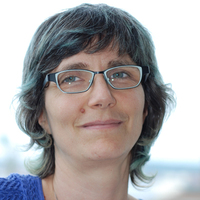

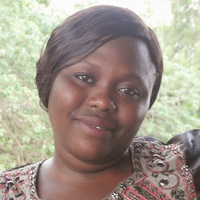
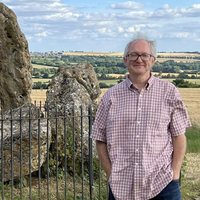
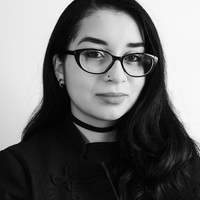
Uploads
Papers by Nithikul Nimkulrat
fashion and textile education is today and where it may
shift in the future. Initiated by Cumulus’s Fashion and
Textile Working Group, the essays in this volume address
critical questions for fashion and textiles. They shed light
on different ideas, approaches, problems, and solutions
from teaching and research, as well as contemplating
the future trajectory and evolution of fashion and textile
education. Will the landing be soft or with turbulence?
Sennett, 2008) and has increasingly involved professionals and academic researchers working collaboratively to explore an interdisciplinary inquiry (Plattner, Meinel & Leifer, 2018). Collaboration in
such research has therefore become vital. A research team may comprise different disciplinary experts, such as scientists, technologists, artists, designers, architects, psychologists, business strategists
and policy makers, working across academic, commercial and public sectors (e.g. Bowen et al., 2016; Nimkulrat & Matthews, 2017). They may work with materials and/or non-materials. Examples include research in the fields of New Materials, Smart Textiles, Virtual Materiality, Material Innovation, Embodied Ideation, and Participatory Practices in Business
in which various partners are in dialogue, developing, consolidating and enhancing knowledge while generating new opportunities for interdisciplinary knowledge exchange.
This conference therefore examines collaboration within research teams of professionals/researchers and members with other diverse disciplinary expertise. Collaboration here is interpreted in the widest possible sense to include any kind of working together. This is to understand how individual experiential knowledge — or knowledge gained by practice — is shared, how collective experiential knowledge
is accumulated and communicated in and through collaboration, and how it is embodied in the outputs and may be traced back to the origin of the practice. The conference also aims to illuminate ‘making’ as the action of change in which matter and materials are transformed through
collaboration, interaction or negotiation between the collaborative team and their material and non-material environments.
Experiential knowledge generated when researchers and practitioners collaborate with experts in other fields are discussed in a rich collection of case studies presented in the papers that shed light on the relationships built within the collaboration, the approaches used and the new knowledge gained and transferred within the team. This should contribute to a more systematic approach for studying and integrating experiential knowledge into collaborative practice and research.